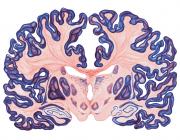2022
Abstract
Attention is fundamental to all cognition. In the primate brain, it is implemented by a large-scale network that consists of areas spanning across all major lobes, also including subcortical regions. Classical attention accounts assume that control over the selection process in this network is exerted by ‘top-down’ mechanisms in the fronto-parietal cortex that influence sensory representations via feedback signals. More recent studies have expanded this view of attentional control. In this review, we will start from a traditional top-down account of attention control, and then discuss more recent findings on feature-based attention, thalamic influences, temporal network dynamics, and behavioral dynamics that collectively lead to substantial modifications. We outline how the different emerging accounts can be reconciled and integrated into a unified theory.

